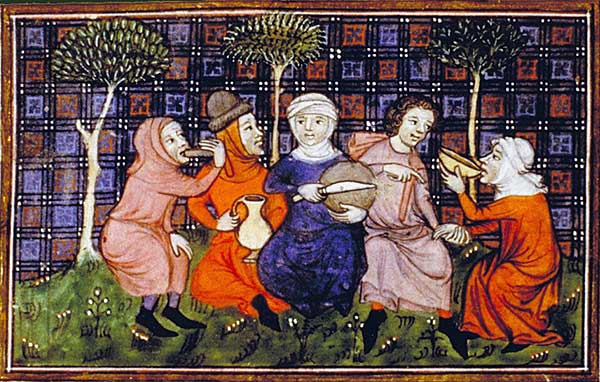
It’s not as easy to be confident with medieval recipes as modern cooking. Even English medieval food is a foreign cuisine, translated from a foreign language and calling for strange ingredients. Here’s three great cooking books for those just get starting in medieval cooking.
Medieval Cookery by Maggie Black
One of the first medieval cookbooks, this book has been simplified for the modern tastebuds and is designed around a very simple shopping centre so it’s easy to get all the ingredients listed. Mostly uses 14th and 15th century english recipes.
Constance Hiatt, Brenda Hosington, Sharon Butler?
One of my favourites, this one branches about a bit further with some roman and middle eastern recipes used as well. It has the initial translation of the recipes and then a modern interpretation of that recipe. I’ve found some of these recipes to be a bit simplified compared to the original text but it’s pleasing to modern tastebuds and the recipes do work.
Medieval Kitchen is a lot more specialised than the other two, focusing on 14th and 15th French and Italian recipes. I personally find the italian recipes to be a little more weird than the French ones, but again, these have been slightly simplified for modern tastebuds and the authors provide good substitutes for when ingredients are harder to find.
Bonus Recommendation
For some history in cooking and dining, plus a little bit on table manners, I’d recommend Cooking and Dining in Medieval England by Peter Brears. Although it hasn’t got a lot of recipes in it, it’s a great place to get an understanding of how the rooms were set out and how and why they cooked and dined they way they did.
——
Featured image is from Livre du roi Modus et de la reine Ratio, a 14th century French manuscript, currently located in Bilblioth?que national de France. It depicts a scence of peasants breaking bread together.